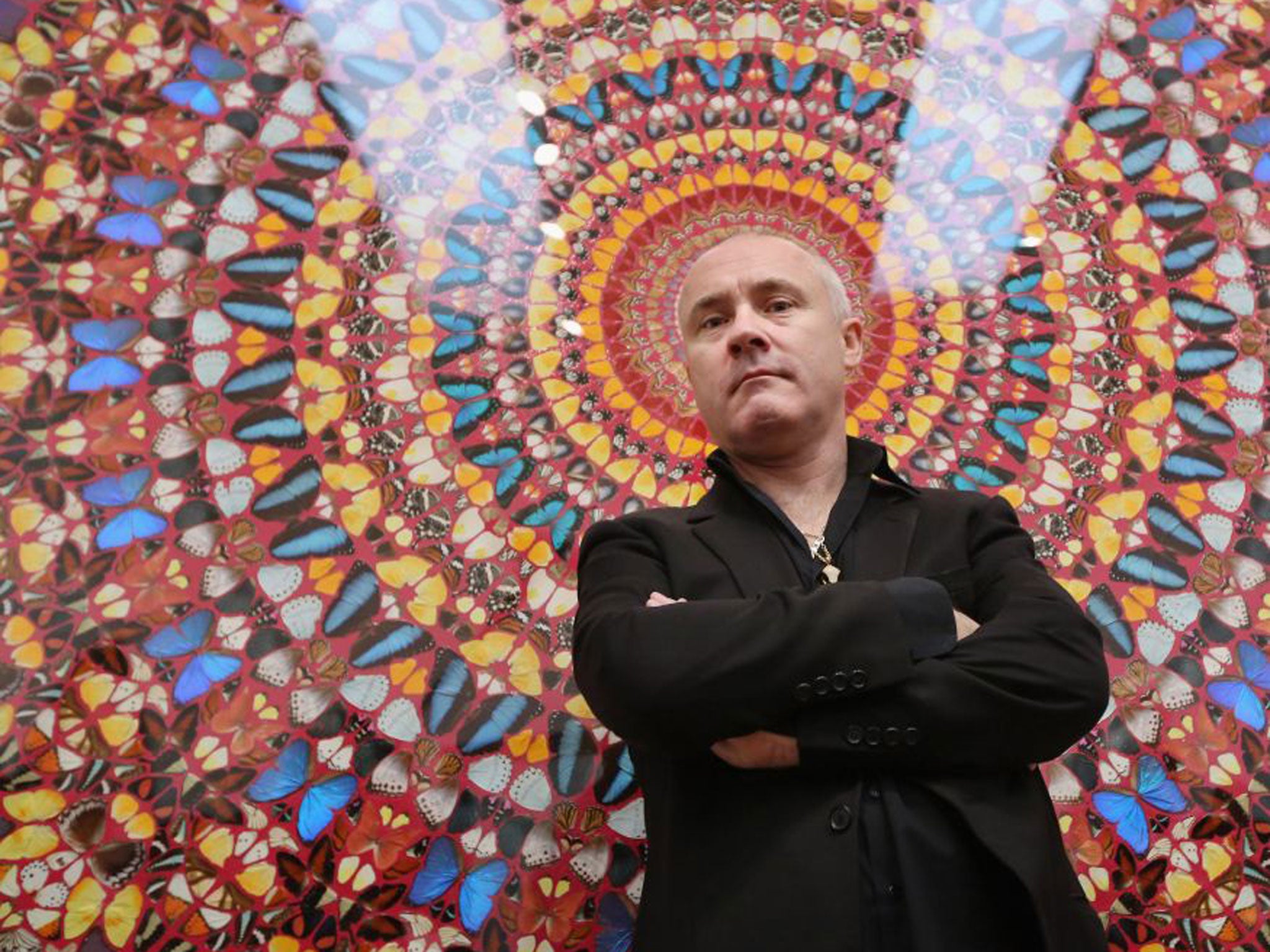Dead serious? Photo of Damien Hirst with severed head riles Richard III academics
A photograph on display in a gallery has been branded an ‘abuse of power’

Twenty-two years after it was first displayed in public, a photograph of Damien Hirst posing with a severed head has provoked outrage from an unlikely source: archaeologists from the university department that discovered the body of Richard III.
In a letter to The Independent, the two academics label the artist’s 1991 work “exploitative and insensitive”, claiming that it disrespects the dead man.
With Dead Head is a photograph of a grinning 16-year-old Hirst posing with the head of a corpse, which was taken at the Leeds anatomy school where he used to sketch body parts. The two archaeologists said the image was an “abuse of power”.
The picture, from 1981, is on display at The New Art Gallery Walsall as part of an exhibition called Artist Rooms: Damien Hirst.
Sarah Tarlow, professor of archaeology at the University of Leicester, and Matthew Beamish, project officer at the University of Leicester Archaeological Services, say in their letter: “Taking such a picture breaches all professional standards of those who regularly deal with the bodies of the dead.”
They continue: “We are well aware that Hirst’s art is intended to challenge and outrage and that it frequently deals with the bodies of the dead, but find this image to be exploitative and insensitive. The photo is an abuse of power by the artist.”
The letter’s authors are members of the department that hit the headlines with the discovery of Richard’s bones under a Leicester car park, a find that was confirmed in February.
Mr Beamish said: “We were really struck by the contrast between the care we took to control the presentation of Richard III’s bones and the apparent lack of concern for this individual [in the Hirst photograph].
“Even though Richard III lived more than 500 years ago, we wouldn’t dream of publishing pictures of colleagues holding his skull and grinning. Or putting a silly hat on him.”
Hirst had shown “no concern for the dignity of this man, who would still be recognisable to relatives and neighbours,” he added. The pair said they had written twice to the gallery to complain, but a representative of The New Art Gallery said the work would not be removed, adding: “It has been shown in a range of public galleries and we haven’t been made aware of any complaints before.”
Regarding the work, Hirst said on his website: “When I was really young, I wanted to know about death and I went to the morgue and I got these bodies and I felt sick and I thought I was going to die and it was awful. And I went back and I went back and I drew them. And the point where death starts and life stops, for me, in my mind, before I saw them, was there.”
A spokesman for the artist declined to respond to the points raised in the letter.
Hirst has long been fascinated by the subject of death and has explored it in different ways – most famously by preserving dead animals in formaldehyde.
Although she said she found Hirst’s work “quite interesting”, Dr Tarlow described the photo as “shocking”.
The professor, who is on the committee planning Richard III’s reburial, added: “Our complaint here is about this individual who hasn’t given his consent. It’s a betrayal of trust.”
Subscribe to Independent Premium to bookmark this article
Want to bookmark your favourite articles and stories to read or reference later? Start your Independent Premium subscription today.

Join our commenting forum
Join thought-provoking conversations, follow other Independent readers and see their replies